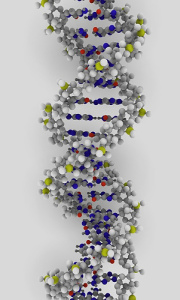Two Chicago residents were arrested recently for allegedly committing retail theft at two different stores at Lincolnwood Town Center. But the value of the stolen goods may leave you wondering why police and prosecutors even bothered pressing charges.
Chicago Retail Theft
In the first incident, a man was charged with retail theft for allegedly hiding an $18 pair of socks and walking out of a Kohl’s department store without paying for them. In the second incident, which occurred on the same day but at Carson’s, a woman was arrested for allegedly concealing a pair of earrings worth $46 and walking out of the store with them.
You’re probably thinking: “Wait, the police were called for an $18 pair of socks? For a $46 pair of earrings? The amount of time and resources they spent taking statements, arresting and booking the suspect was probably five times the cost of the items these two people attempted to steal. Can they even get jail time for that?”
Despite the fact that yes, the expenditure in police, prosecutor and court time and resources to follow these two cases from arrest to jury trial far exceeds the value of the items stolen, both these defendants could be facing jail time if found guilty.
Retail theft in Illinois of any property valued at less than $150 is a Class A misdemeanor, which is punishable by up to a year in jail. A charge of retail theft isn’t dependent upon the suspect actually getting away from the store with the item. Once he exits the store with the unpaid merchandise, the crime has been committed, even if store security was watching and waiting for him to step outside before detaining him.
But why bother pressing charges against a person for $18? Taken as a single event, it seems ridiculous. But from the store’s perspective, these small, single events add up and take a toll on their bottom line, so many take a hardline and press charges on all attempted thefts, no matter how small. Many department stores even have signs posted in dressing rooms and other prominent places stating their intent to prosecute all incidents of retail theft, no matter how minimal the value of the stolen item.
From the prosecution’s standpoint, small crimes can add up. While a person may steal only an $18 pair of socks one day, over the course of several years the theft of small items quickly adds up. But that doesn’t mean if you are arrested with retail theft you are guaranteed time spent in jail. Prosecutors are overworked, underpaid and want to close the big cases – murder, robbery, sexual assault and other violent crimes – not spend precious time and resources going after sock stealers. If this is a first or second offense, chances are high that the charges may be dismissed, or we can negotiate no jail time in exchange for a guilty or no contest plea. Or we may be able to have the charges reduced to attempted theft, depending on the circumstances. With an experienced criminal defense attorney, it is often possible to get these crimes pled out with minimal to no jail time, or even outright dismissed.
 Chicago Criminal Lawyer Blog
Chicago Criminal Lawyer Blog










